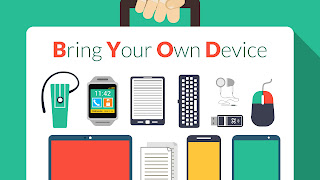Twitter Feed
GovCloud Founder and Veteran’s 360 Showcased in US Veteran’s Magazine
Kevin L. Jackson, CEO and Founder of GovCloud Network, LLC, was showcased in US Veteran’s Magazine for his work with Veteran’s 360, a San Diego, California non-profit. With more than…
Cloud Environment Can Enable Fast, Secure Collaboration among Industries, Nations
NCOIC’s Kevin Jackson to present new process for creating interoperability via a cyber-secure multi-cloud environment at cloud computing conferences in the U.S. and China WASHINGTON—June 4, 2014—Cyber-secure cloud computing can…
The Federal Government Journey to Cloud Computing: Lessons Learned
[Republished from”On The FrontLines” magazine “Cloud Computing in Government: Lesson’s Learned” issue. Download the full 20 page issue online at https://digital.onthefrontlines.net/i/319551 ) In February 2011, Vivek Kundra announced the “Cloud…
Cloud Computing In Government Lesson’s Learned From On The FrontLines Magazine
Congratulations to my friends at “On The FrontLines Magazine” for an EXCELLENT presentation of important operational and managerial cloud computing transition lessons. This issues showcases cloud computing leaders from government…
From “Boots on the Ground” To “Heads in the Cloud,” Non-Profit aims to offer Cloud Training & business services to Corporate IT and HR teams.
From “military dedication” to “civilian success,”Veterans 360 Services is approaching the challenging transition of military service to civilian life with an innovative, focused and all-inclusive, 360 degree, process of education…
ICH Agile Cloud Consortium Completes Successful Event
Thank you to all that participated in yesterday’s ICH Agile Cloud Service Catalog event. ICH Agile Cloud is an industry-wide effort targeted at developing an open and inclusive cloud service…
ICH Releases Agenda for Agile Cloud Service Catalog Session
The Agile Cloud consortium’s second event will occur on May 21, 2014 at TIA Headquarters in Arlington, VA. This event will focus on development of the Agile Cloud Environment Service…
PDNS Offers “Anchor” Cloud Services to Agile Cloud Consortium
Private Digital Network Services (PDNS) and partners will provide its national, Private Digital Network (PDN) core and a suite of highly sought after services to the Interoperability Clearinghouse Agile Cloud effort. Its…
ICH/ITAAC Announces Second Agile Cloud Environment Event
The 2nd Agile Cloud Environment event will be held on May 21, 2014 at TIA Headquarters. This event will focus on development of the Agile Cloud Environment Service Catalog. The…
Interoperability Clearinghouse Launches “Agile Cloud” Collaboration
Last Wednesday, Maj Gen, USAF (Ret) John T. Brennan, Interoperability Clearinghouse (ICH) Executive Director, kicked off the Agile Cloud collaboration. This industry-wide effort is targeted at developing an open and…
- Increased employee mobility (63%), satisfaction (56%) and productivity (55%) dominate as the top drivers of BYOD. These employee related drivers are considered more important than reduced costs (47%).
- Security (39%) and employee privacy (12%) are the biggest inhibitors of BYOD adoption.
- 20% of surveyed organizations have suffered a mobile security breach, primarily driven by malware and malicious WiFi.
- Security threats to BYOD impose heavy burdens on organizations’ IT resources (35%) and help desk workloads (27%).
- Despite increasing mobile security threats, data breaches and new regulations, only 30% of organizations are increasing security budgets for BYOD in the next 12 months and 37% have no plans to change their security budgets.
- 72% – Data leakage/loss
- 56% – Unauthorized access to company data and systems
- 54% – Downloading of unsafe apps or content
- 52% – Malware
- 50% – Lost or stolen devices
- 49% – Vulnerability exploitation
- 48% – Lack of control on endpoint security
- 39% – Infrequent software updates
- 38% – Compliance
1. Create your policy before procuring technology: To effectively use mobile device management (MDM) technology for employee owned devices Policy must precede technology. Also note that these policies will have broad corporate-wide implications for IT, HR, legal, and security.
- Mobile device management
- Application security assessments
- Application testing services
- Application source code security assessments; and
- Embedded device security.
This post was brought to you by IBM Global Technology Services. For more content like this, visit ITBizAdvisor.com.
( Thank you. If you enjoyed this article, get free updates by email or RSS – © Copyright Kevin L. Jackson 2017)
Cloud Computing
- CPUcoin Expands CPU/GPU Power Sharing with Cudo Ventures Enterprise Network Partnership
- CPUcoin Expands CPU/GPU Power Sharing with Cudo Ventures Enterprise Network Partnership
- Route1 Announces Q2 2019 Financial Results
- CPUcoin Expands CPU/GPU Power Sharing with Cudo Ventures Enterprise Network Partnership
- ChannelAdvisor to Present at the D.A. Davidson 18th Annual Technology Conference
Cybersecurity
- Route1 Announces Q2 2019 Financial Results
- FIRST US BANCSHARES, INC. DECLARES CASH DIVIDEND
- Business Continuity Management Planning Solution Market is Expected to Grow ~ US$ 1.6 Bn by the end of 2029 - PMR
- Atos delivers Quantum-Learning-as-a-Service to Xofia to enable artificial intelligence solutions
- New Ares IoT Botnet discovered on Android OS based Set-Top Boxes


